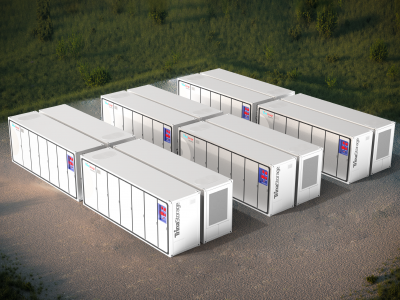Could hydrogen cells work alongside batteries?
Is hydrogen back in serious contention as a storage technology? A look at recent developments might indicate yes. Amazon, for example, has committed to spend USD$600m to buy up to 23% of fuel-cell maker Plug Power’s stock.
The online retailer will use the fuel cells it buys to help power forklift trucks in its warehouses. Plug Power said Amazon will be spending around USD$70m this year. This spend will also cover stationary back-up power and hydrogen refueling infrastructure. Aiding lifting gear is an area where hydrogen has a well-defined niche, and its use is far from contentious. But a more audacious recent proposal is one by a consortium comprising Carnegie Energy and Samsung EDI, among others, to build a 100MW hydrogen storage battery in South Australia. According to Carnegie’s CEO, the company has already delivered 25-plus grid-scale storage systems in Australia.
Hydrogen-powered prototype vehicles
Meanwhile, the US military wants to exploit the fact that its hydrogen-powered prototype vehicles generate little noise, but quite a lot of water, and also enjoy a 300-400 mile range between refueling stops. But hydrogen storage still has more than a few detractors. Many in the automotive sector, particularly, see the dominance of batteries as something that’s unlikely to change.
Tesla CEO Elon Musk has famously described hydrogen-powered cars as “incredibly dumb.” More significantly, auto manufacturers that had previously announced hydrogen vehicles with fanfares are now quietly retiring these projects in favour of battery-powered electric vehicles. Mercedes and Daimler are the two most notable examples.
BMW hedges its bets
Even in the automotive sector, though, the attitude towards hydrogen is not entirely negative. BMW is taking a pluralistic view. The German auto giant identifies a number advantages of fuel-cell technology, not least its lack of reliance on rare earth metals, which current batteries depend on. And despite the rise of superchargers, electric vehicles mostly take hours to recharge, whereas hydrogen-powered vehicles can be filled up as quickly as gasoline models.
While BMW has expressed surprise at continued advances in lithium-ion battery technology, it is still committed to developing a hydrogen vehicle in the next few years. In the long term, according to the carmaker’s head of sales and marketing, BMW thinks battery-only cars will not predominate and there could well be a combination of technologies in the global car market.
Batteries and hydrogen on the grid

Batteries and hydrogen fuel cells might peacefully coexist at the grid level, too. Israeli fuel-cell maker GenCell has sold Californian utility San Diego Gas & Electric (SDG&E) sufficient G5rx units to provide backup power to an initial three substations, with 27 more to follow within three years.
GenCell says the advantage of its technology over currently used lead-acid batteries is the ability of hydrogen fuel cells to provide power for 10 times longer than lead acid. Meanwhile, SDG&E is also betting big on batteries, recently unveiling the world’s largest lithium-ion installation. According to technology partner AES, “two facilities totalling 37.5MW will enhance reliability and maximise renewable energy use in Southern California.”
A mix-and-match future?
This lends weight to the idea that instead an either/or model, the future of energy storage may lie in an interlocking ecosystem of complementary technologies.
This is a topic that will be covered at the 10th Energy Storage World Forum and 4th Residential Energy Storage Forum in Berlin next month. A session on “Which Synergistic Combinations of Energy Storage Technologies Can Make an Attractive Product and Business Case?” will consider hybrid battery and hydrogen storage, plus hybrid thermal and electrical options. The case that will be made by speaker John Hatton, Chief Commercial Officer of Alpheon Energy, is already being echoed by other sources in the industry.
In South Australia, for example, RenewEconomy recently revealed that hydrogen and batteries were both being considered as Australian storage assets by the Clean Energy Finance Corporation (CEFC). “The CEFC technology roadmap includes pumped hydro and batteries, along with synchronous condensers and other technologies; ‘dispatchable’ renewables such as solar thermal, geothermal hydrogen and biomass,” it said.
Learn “Which Synergistic Combinations of Energy Storage Technologies Can Make an Attractive Product and Business Case?” at the 10th Energy Storage World Forum and 4th Residential Energy Storage Forum from May 8 to 12.
The article “Could hydrogen cells work alongside batteries?” is written by Mike Stone
If you want to know more about this and other topics directly from end users of energy storage technologies join us at one of these annual events: The Energy Storage World Forum (Grid Scale Applications), or The Residential Energy Storage Forum, or one of our Training Courses.




